 Contact
Contact
| Nate Greenwall | |
|---|---|
| phone_in_talk 1-435-512-7281 | |
| email [email protected] | |
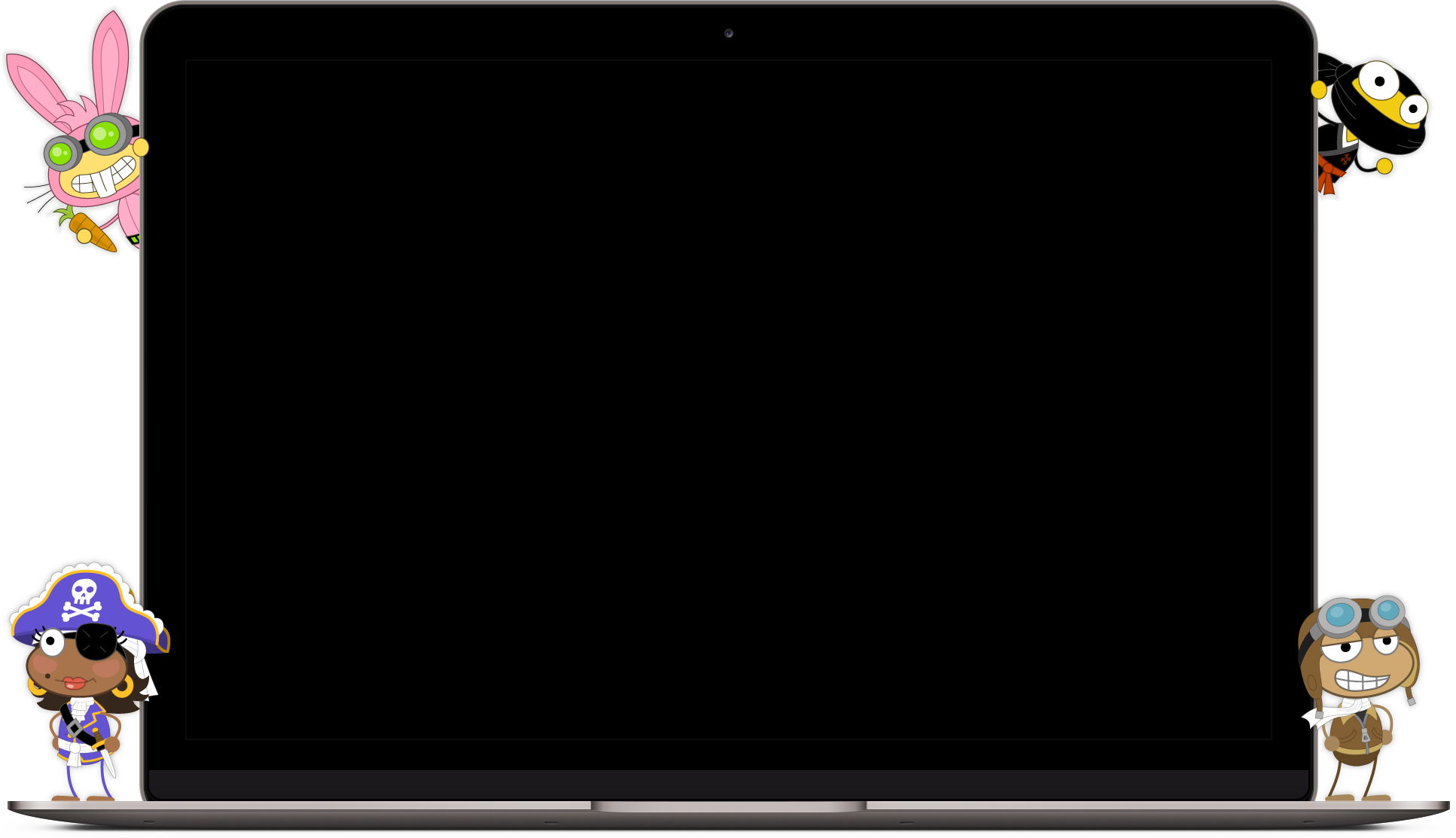

players a month
page views a month
session average
Apple & Google app stores
Poptropica® Original is a popular web and mobile game that engages and educates kids ages 6-15. Poptropica makes reading, problem solving, and social interaction exciting through interactive storytelling and safe multiplayer chatting.
I provided research, wireframing, rapid prototyping and testing, UI design, art direction, game design, character design, illustration, branding, and custom advertising.
"I had the pleasure of working with Nate for almost a decade at Poptropica…Nate is very thoughtful in his work. His design is carefully considered and expertly crafted…For a number of years, Poptropica was the biggest kids' online game experience, and it was named one of Time magazine's 50 best websites. This is due in large part to Nate's contributions...his fingerprints are on everything we did." Read Full Recommendation >
Jeff Kinney
Creator of Poptropica® and author of the "Diary of a Wimpy Kid" series.
“When we built Poptropica into the largest kids site in the world, the drive behind that effort was simply the very best usability...It was Nate who brought those three together at a powerful intersection for eight million unique kids per month. Nate's passion for, insight to, and relentless work behind, our User Experience/User Interface design (web and mobile) made it all possible.”

Jess M. Brallier
President of Family Education Network, during the creation of Poptropica®
Back in 2007 the kids' gaming world was saturated with mini-games or games with overly-complex onboarding. Parents and teachers were leary of kids playing games that offered free-chat. Many were worried about kids being subjected to cyperbullying, swearing, and sharing their personal information.
Jeff Kinney, the author of the "Diary of a Wimpy Kid" series, decided to make a new IP and hired a few of us to help realize his vision.
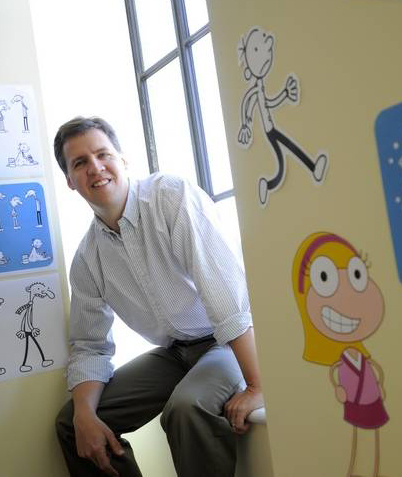
Jeff Kinney - Author of the "Diary of a Wimpy Kid" series and creator of Poptropica®
As a team we worked together to identify our key audience and do a competitve analyse of the games they played. From our research, our goal was to produce a game for kids ages 6-15.
We wanted kids to quickly create an avatar, jump into our game world, and play longer quest-based stories. We also wanted to add in multi-player features, but make sure it was safe and secure (COPPA Compliant).

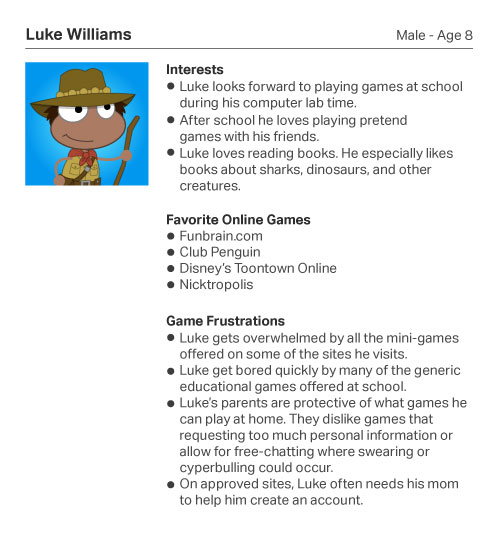
Example persona from 2007
From our research we knew a 6 year old is not as confident at reading or processing complex topics. A 15 year old is often not interested in a simple “kiddish” experiences.
To address the needs of our youngest users we focused on visual storytelling. We also built our scenes to be "virtual playgrounds", where kids could have fun running and jumping on cars, trees, and buildings.
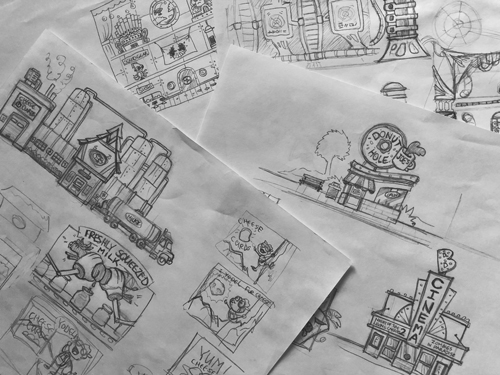
Some of my sketches for various islands and scenes
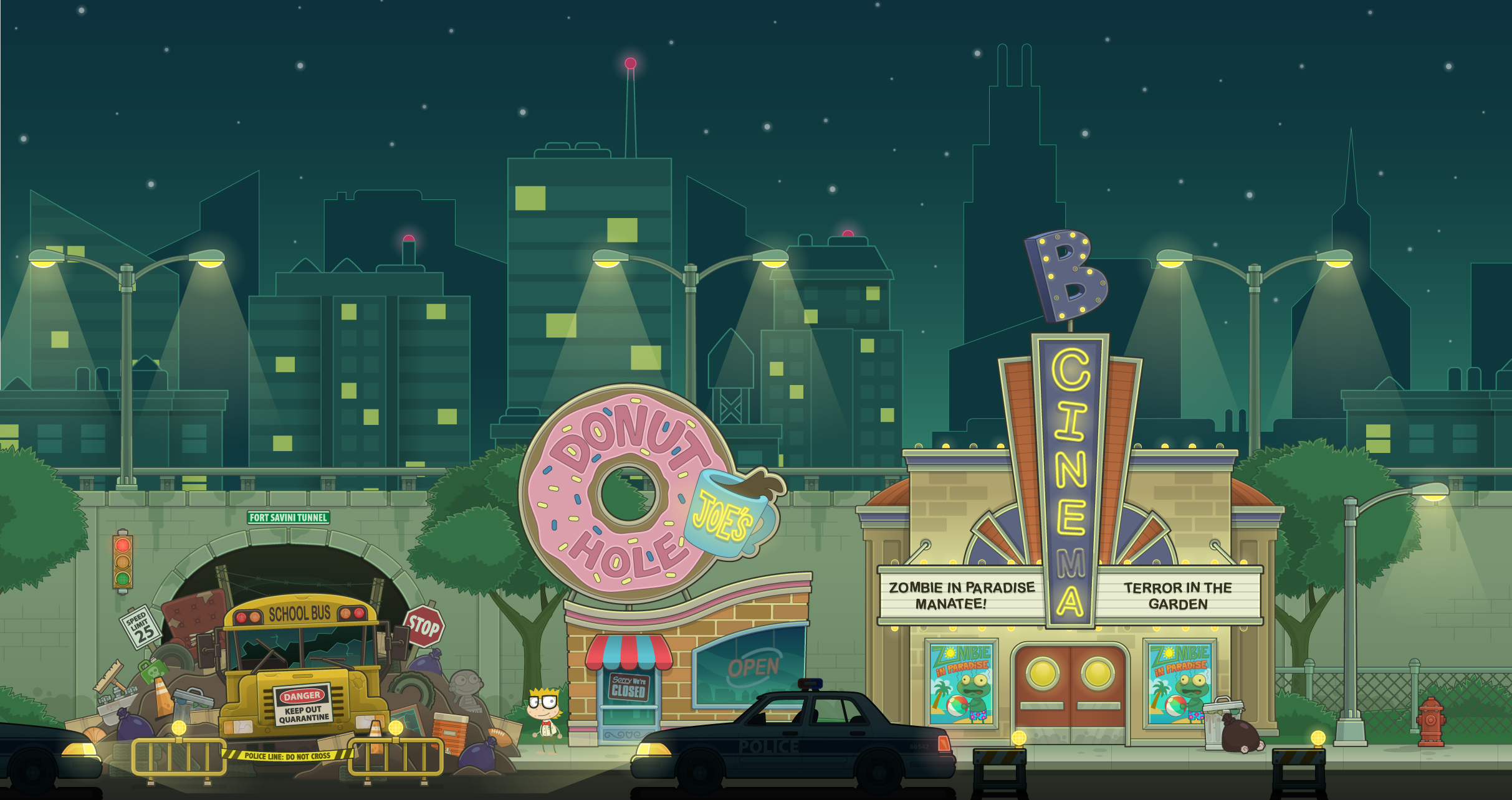
Example scene I created for Zomberry Island
For our older audience we made it so could they dig deeper. They could visiting with islanders (non-playing characters) to learn more. And they could discover items, puzzles, and mini-games through scene exploration. For every island, we added in emotional elements like humor and mystery to further invest players into the world.
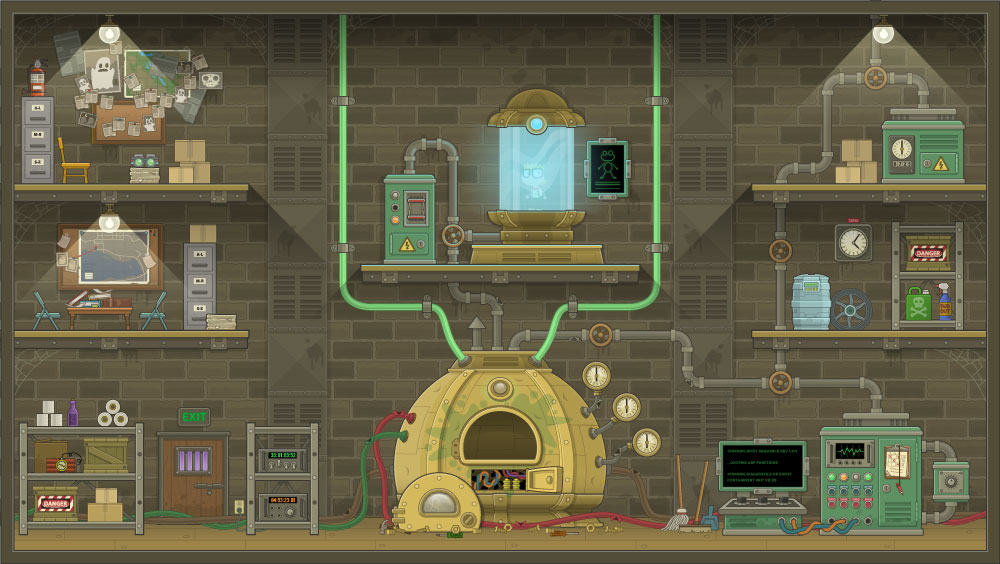
Example Interior scene I created for Ghost Story Island

Examples of island mini-games I worked on
One of the first islands I helped develop was Shark Tooth Island. Jeff Kinney, Jordan Leary (developer) , and I worked on fleshing out the story.
With the main island story in place, we designed, wireframmed, prototyped, and tested key gameplay elements. In tandem with those other tasks, I worked on generating the visual style for the island and it’s inhabitants. I then illustrated each scene and handed them off to Jordan to develop.
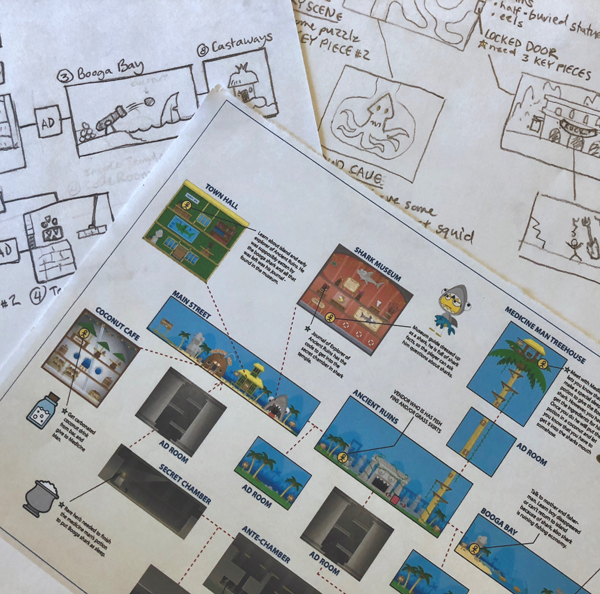
Various flows I made for Shark Tooth Island, etc.
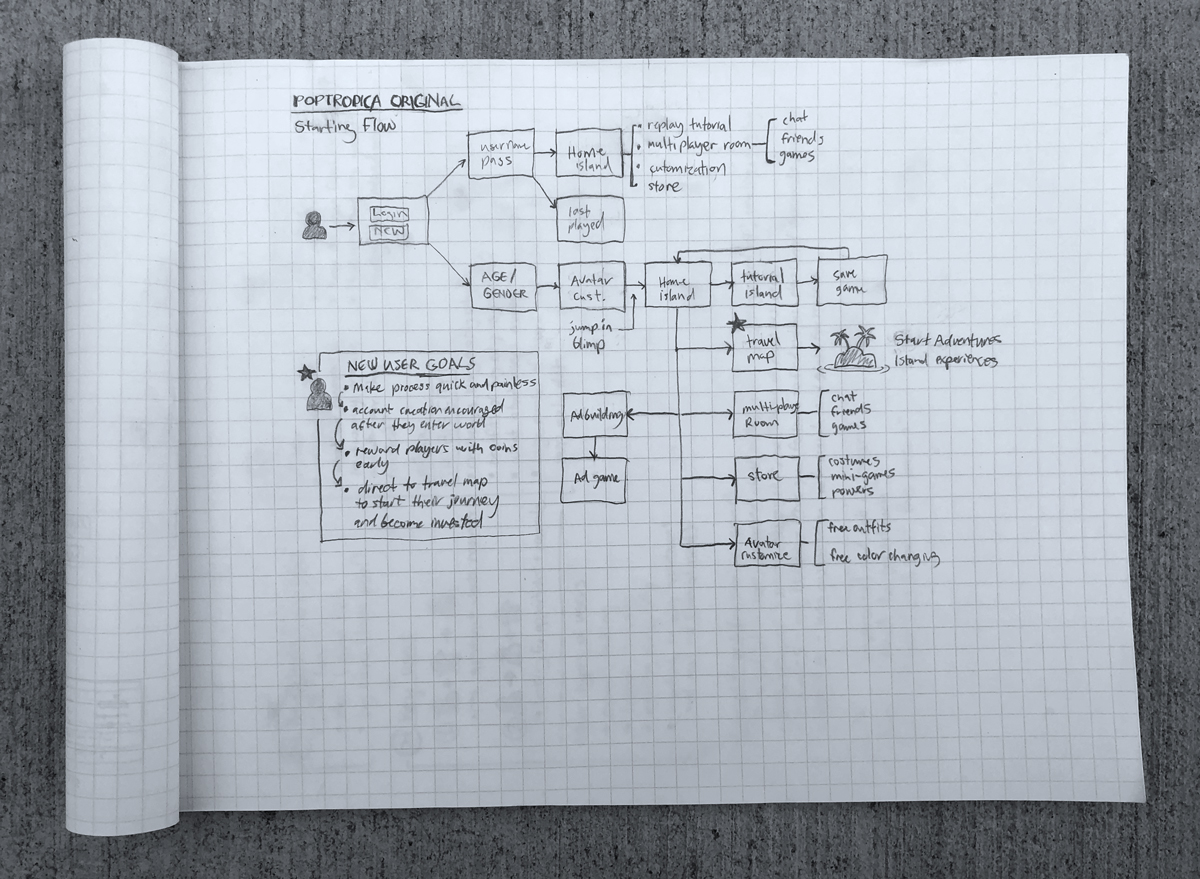
Sketch of starting flow for "New Player" and "Returning Player"
We created the world of Poptropica® to host countless other interactive stories like Shark Tooth Island. Each island was a unique design challenge requiring new stories, characters, puzzles, and challenges. In 2007 we released Poptropica® with 3 islands, and in 2017 the we had developed over 58 original islands!
As we made more islands, the challenge was to keep the content accessible. To make this content easier to access, I created several iterations of a multi-page travel map.
Poptropica is full of interactions and events, so testing was extremely important. We used various methods to test out new content and features before and after releasing them.
In-game we set up event tracking. Event tracking enabled us to get data on user engagment, completion rates, and key pain points.
We also combed the internet to get user feedback. We read user reviews and watched game playthroughs on youtube.
This process of designing, building, and testing continued for each new release. Our end-goal was to make something users could enjoy playing, sharing, and coming back for more.
Testing and data collection options we used
Our users wanted more islands, but it took our team several months to release an island. We brought in new talent to speed up the creation process. I had the opportunity to train and direct many of them. I also set up various style and design guides to help new developers and designers.
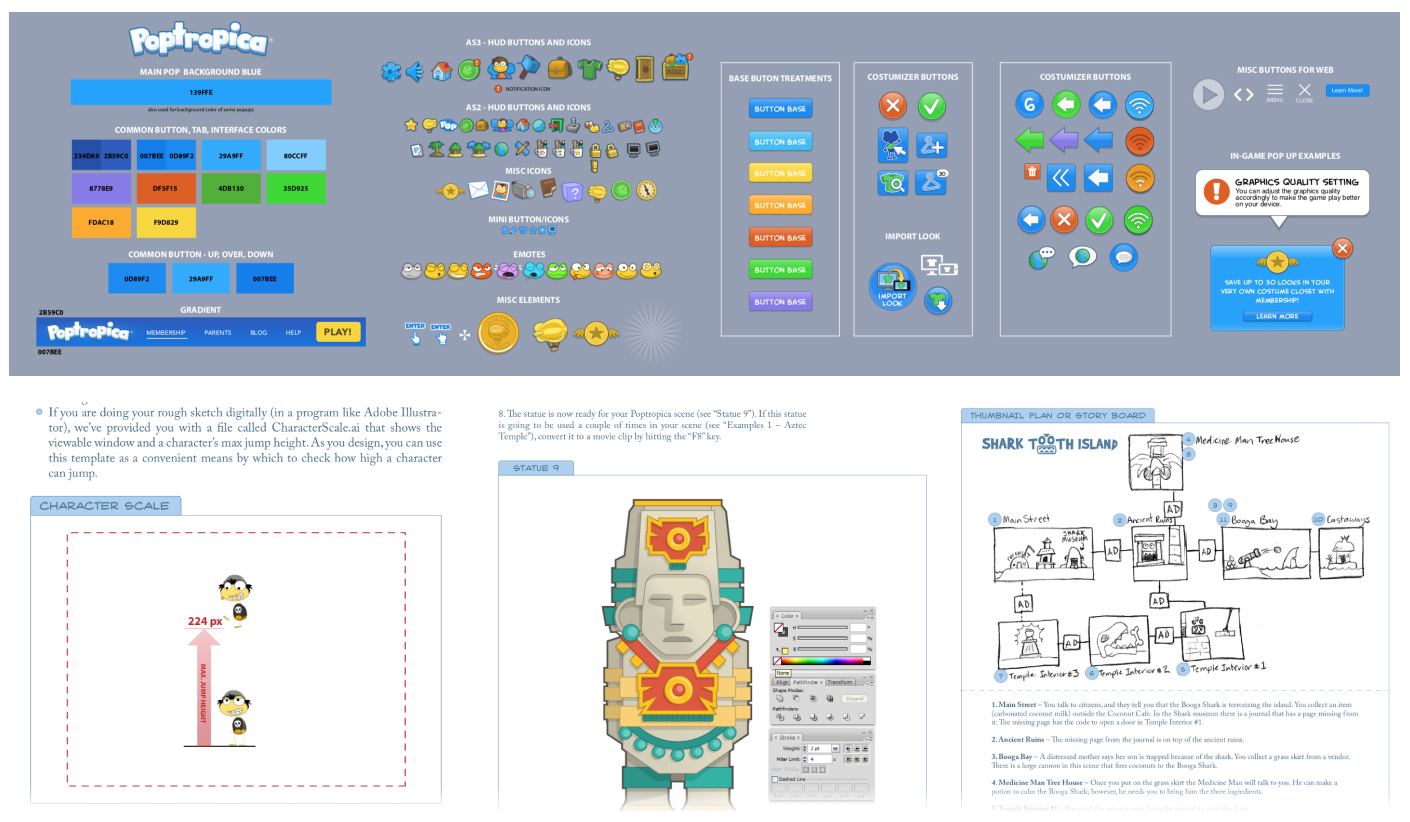
Examples from various guides I put together for developers and designers
Even with new staff resources, we had to feed our users’ content needs outside of just “islands". So we designed new game content. I was part of the design process on each of these ventures — flows, wireframes, and final designs.
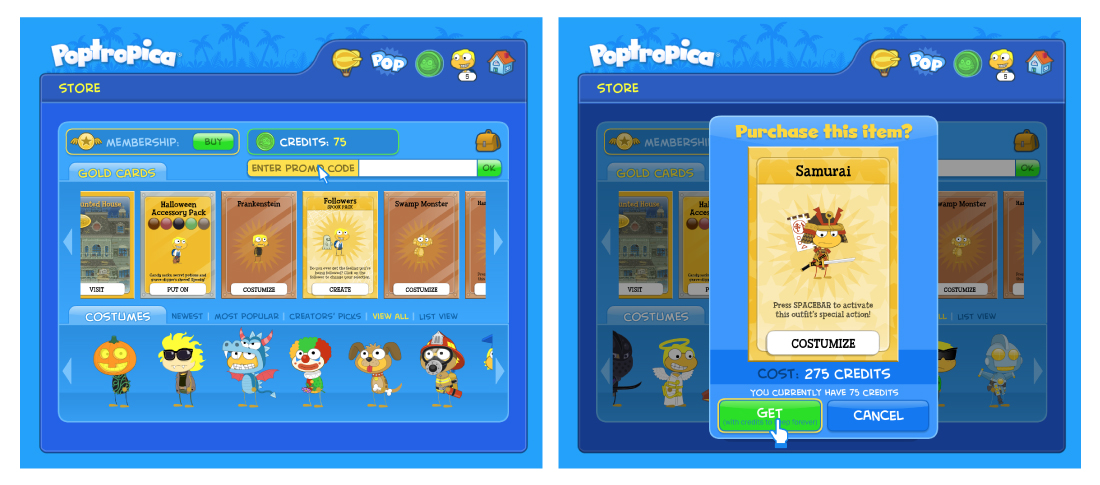
Poptropica Store
The store is where players can use their in-game currency to purchse outfits, mini-games, followers (pets), and special abilities.
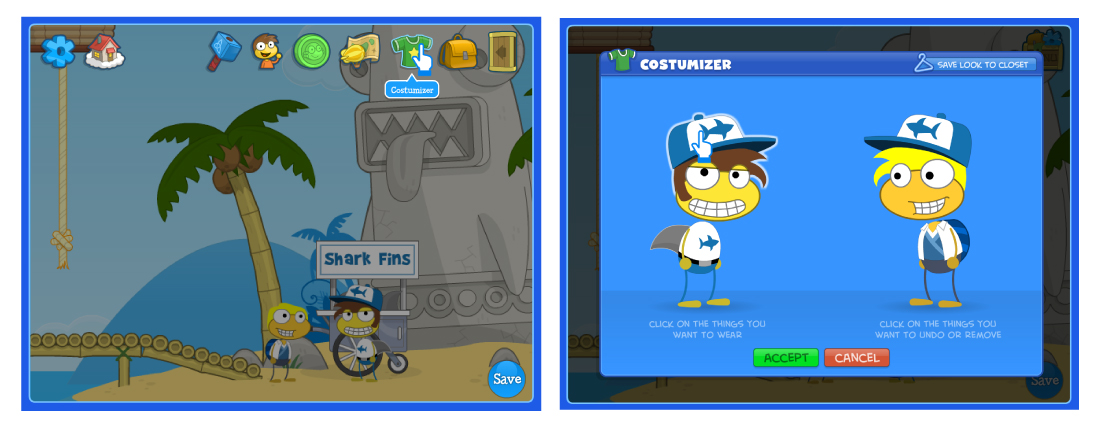
Costumizer
If a player sees a cool NPC outfit, they can "costumize" parts from the NPC.
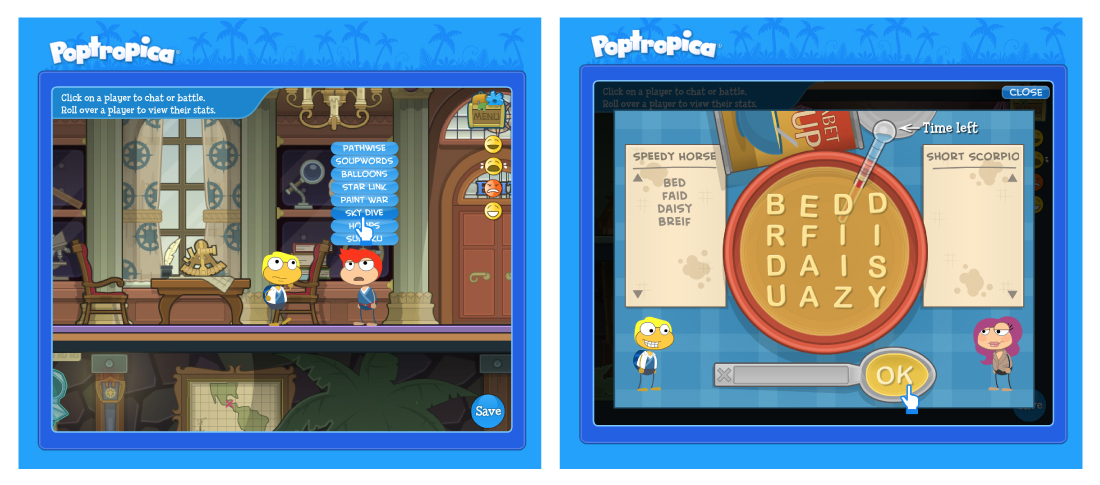
Multiplayer
In multiplayer rooms or "common rooms" users can safely chat (prescripted chats), make new friend, and play mini-games with others.
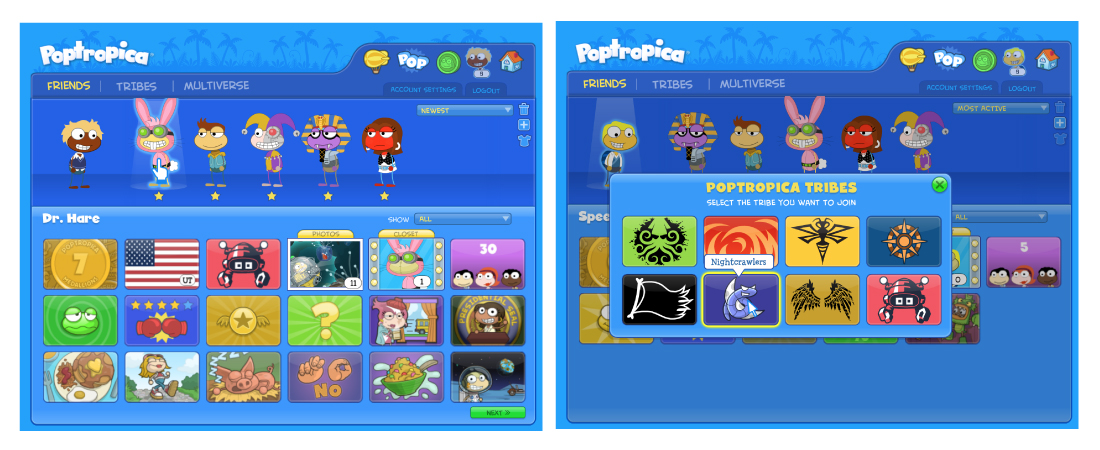
Stats & Tribes
Players can answer questions to generate a visual "quilt" of their likes and dislikes. They can add friends and see their friend's stats. Users can also join a tribe and visit that tribe's common room to engage with other tribe members.
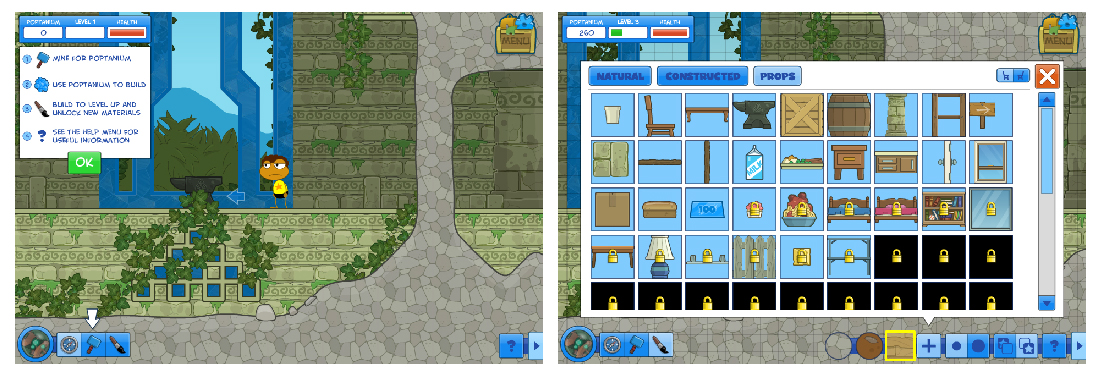
Poptropica Realms
Players could visit Realms to mine, craft, build, and share their own worlds.
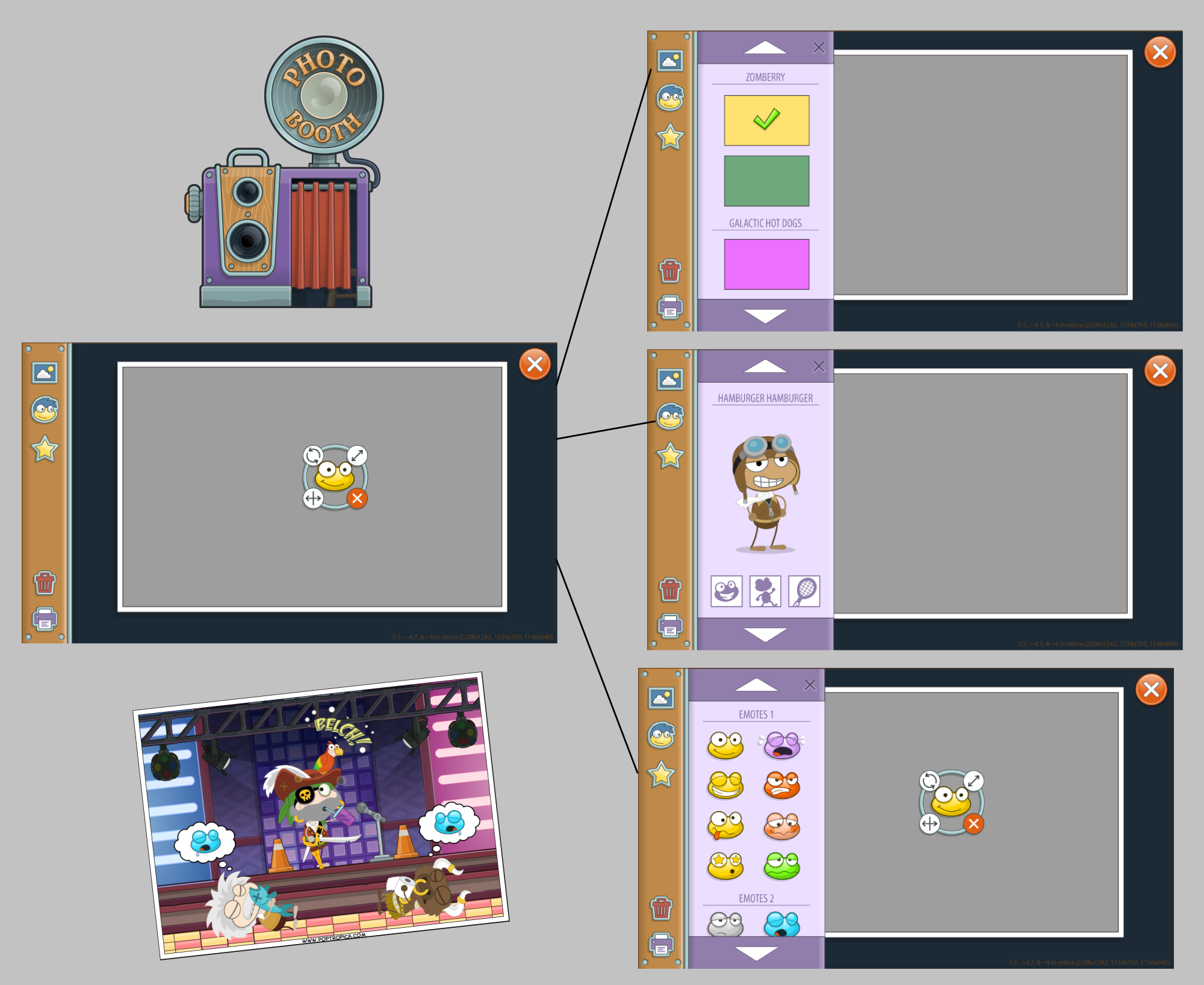
Poptropica Photobooth
Example flow I made for the Photobooth. In the Photobooth Players can select a background, add characters and stickers, and then share their photo online.
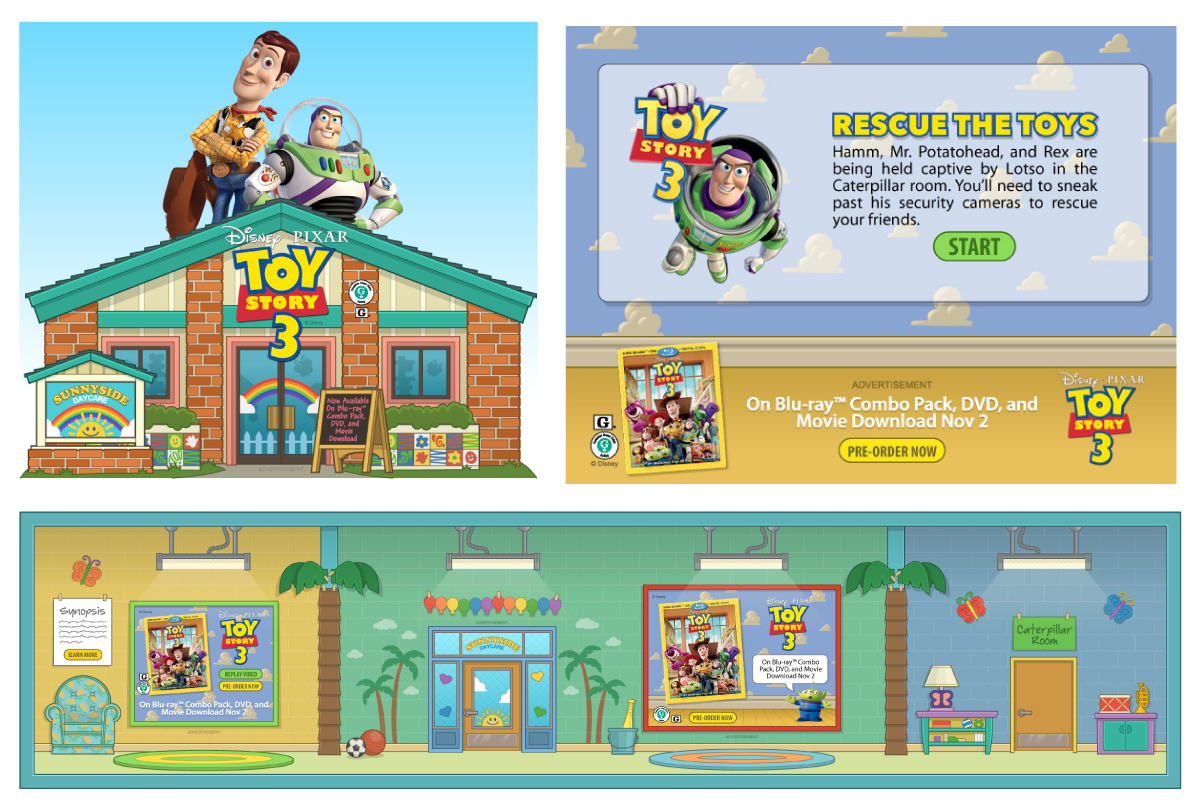
Custom Advertisements
Players can visit in-game advertisements, watch trailers, and play mini-games to collect novel rewards.
Early on Jeff Kinney wanted Poptropica® to be free to play. After looking at current ad trends and our own data, we found that banners ads were ineffective. So we produced custom in-game interactive advertisements with special in-game rewards. We made ads for Disney, Pixar, Sony, Nintendo, Cartoon Network, LEGO, Fox, Tootsie Roll, Kellogg, Peanuts, Charlie and the Chocolate Factory, and many others.
These custom ads became very popular. Players recorded walkthrough youtube videos of many of our in-game advertisements. For example, below is a fan-made video of an ad I worked on for Dinsey XD - "Pranksgiving".
Example fan-made youtube video of an in-game advertisement
As we were looking at out user data and gaming trends, we knew our users were moving to mobile. In response to that need, we rebuilt our game engine to support mobile and web. I worked on redesigning many of the core systems -- character creation, item inventory, store, costume customization, settings, and the multiplayer system.
Trailer for the Mobile version of Poptropica
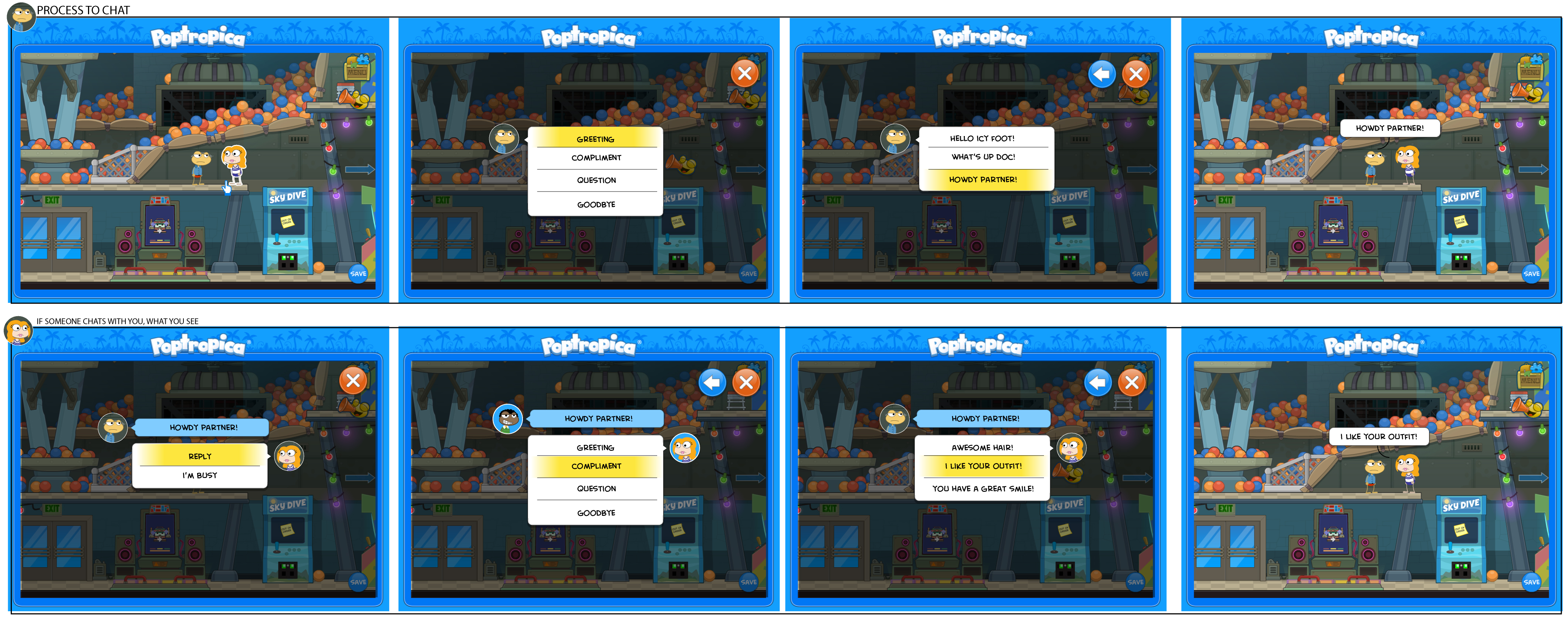
Flow and mock-up of new multiplayer chat system

Redesign of "Settings" and "Account Settings"
Several app icons I made for the game
With the push to mobile, I was tasked with redesigning several of our out-of-game pages and making them responsive.
Prototype and design I put together of the "Get the App" page
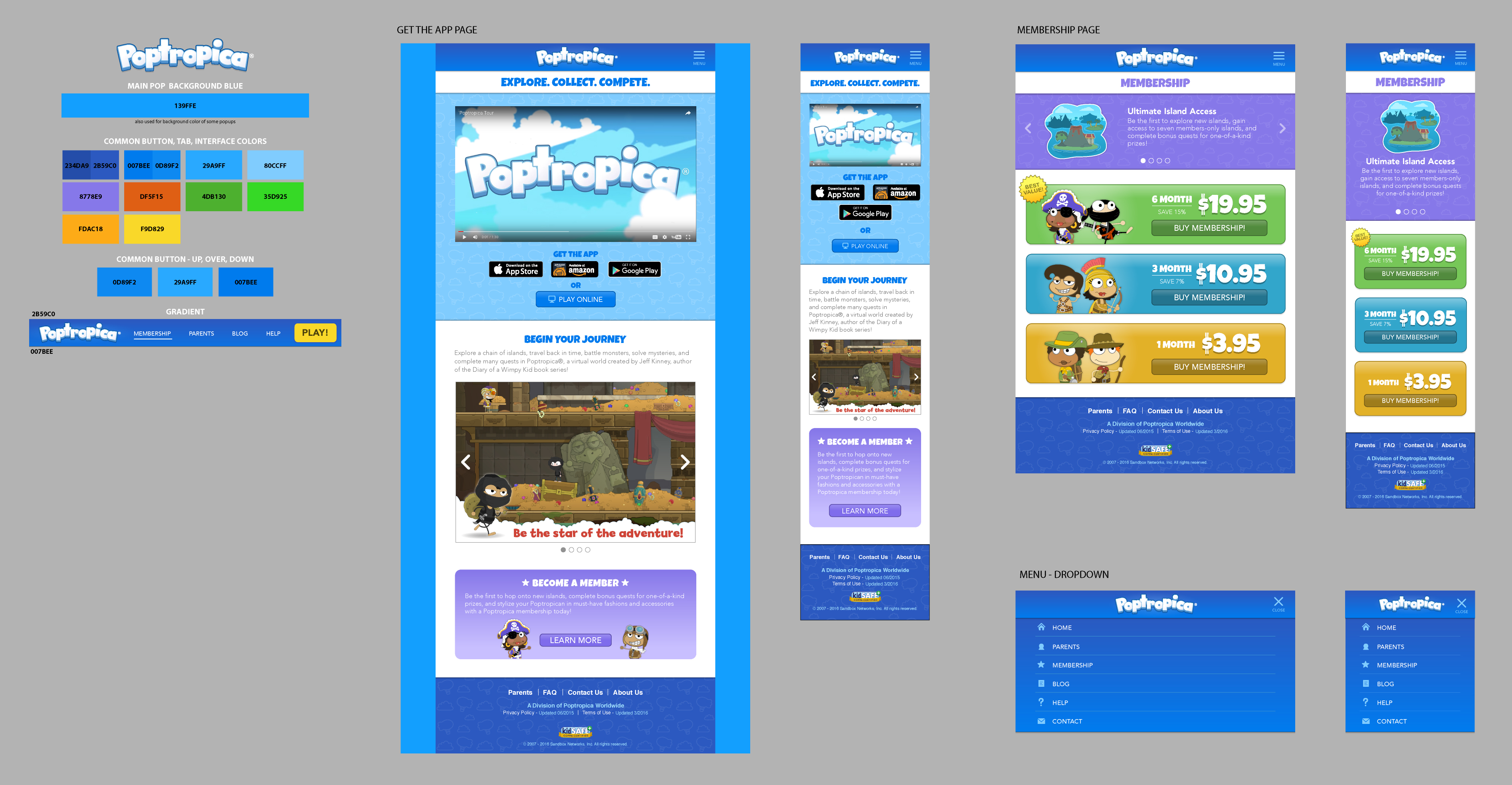
Responsive designs for "Get App" and "About Membership" pages
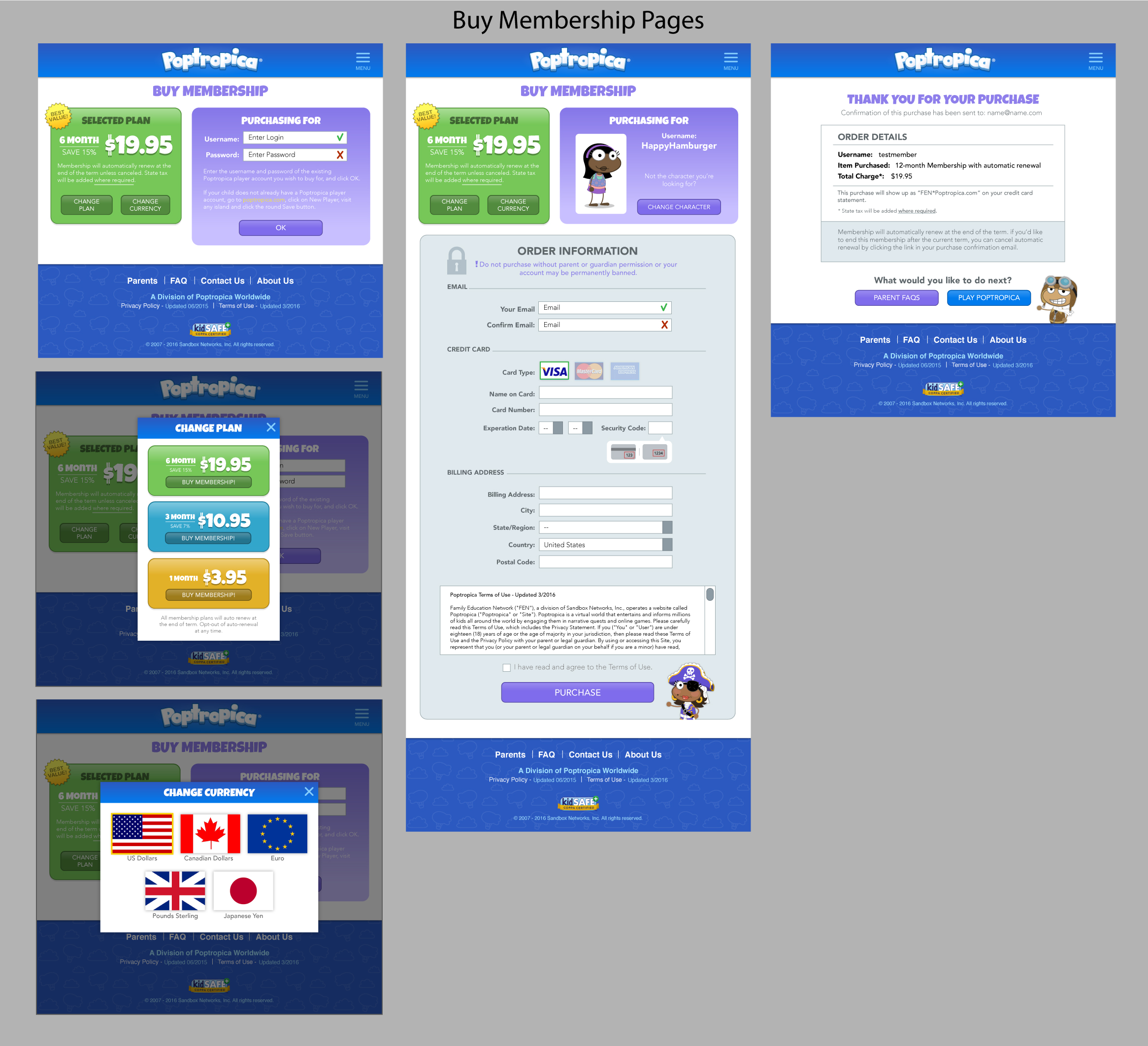
Redesign of the "Buy Membership" pages
With the popularity of our game our audience wanted tangibles. I was a product designer for many of the books, toys, T-shirts, paper-crafts, a Poptropica® LEGO® set, and more.
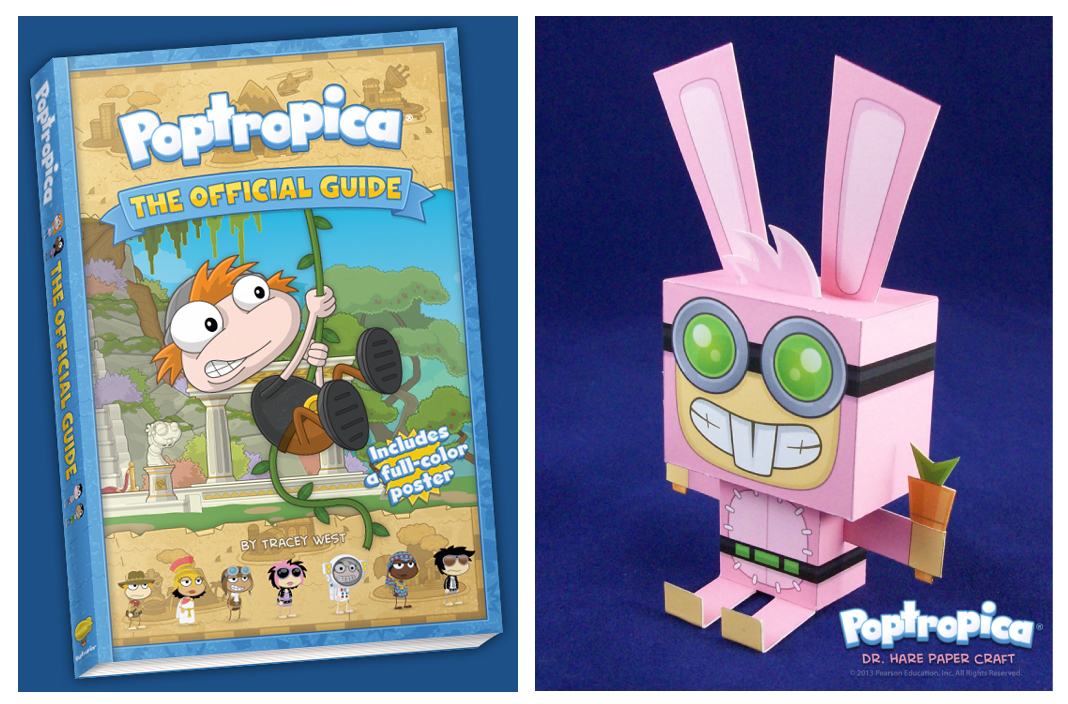
Official guidebook and Dr. Hare Papercraft
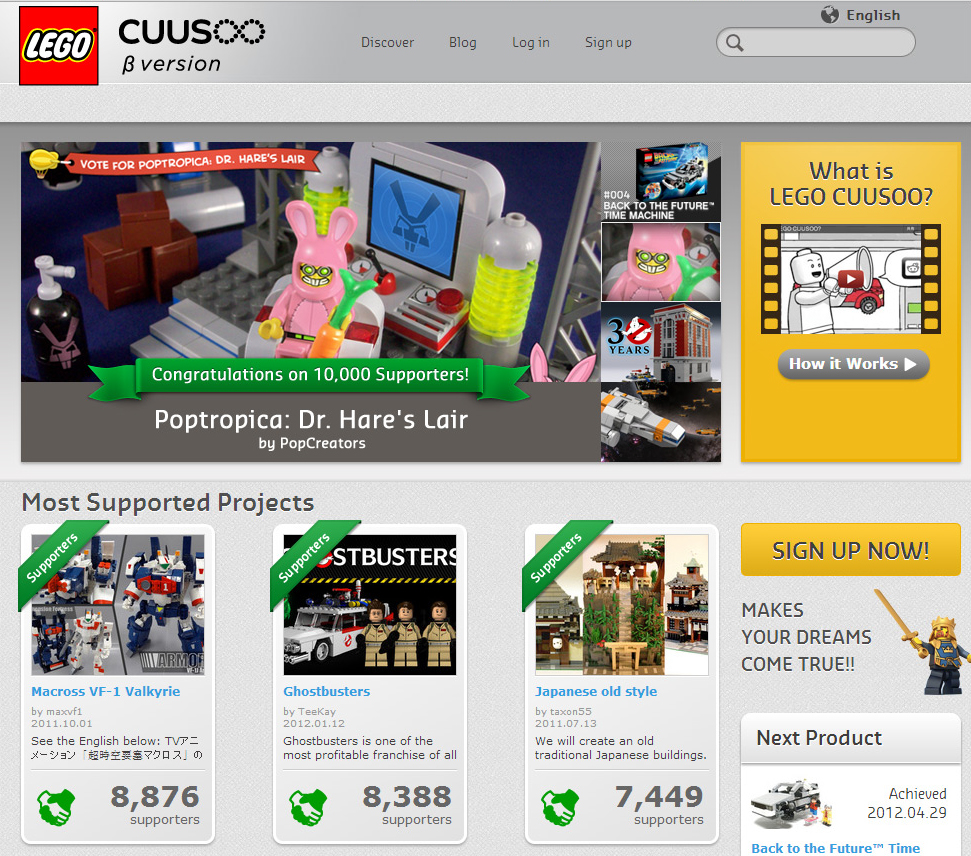
I designed and built this popular set for LEGO® Cuusoo (now LEGO® Ideas)
Poptropica became widely popular, especially in schools. And we had a large dedicated fanbase that authored blogs, videos, and guides. Poptropica was built to entertain but also to educated. It was licensed by Pearson for teaching ESL worldwide.
“In 2011, Poptropica® was listed on Time magazine's list of "50 Websites that Make the Web Great", where it was described as "an inventive megasite for kids with a wholesome and slightly educational bent."[2] In 2012, Poptropica® had an Alexa Internet rating of 1,302 in the United States, and a ranking of 5,162 in the world.[3] By 2012, the game had grown to have over 500 million registered users, with 35 million in the 15-25 age group.[4] Versions of the game have been released on Nintendo DS, and iOS mobile devices. In May 2015, it was announced that FEN was sold by Pearson to the interactive-education venture capitalist Sandbox Networks,[5] and that Poptropica® had "over 3.2 million monthly unique users in 200 countries and territories.”[6]”
https://en.wikipedia.org/wiki/Poptropica®
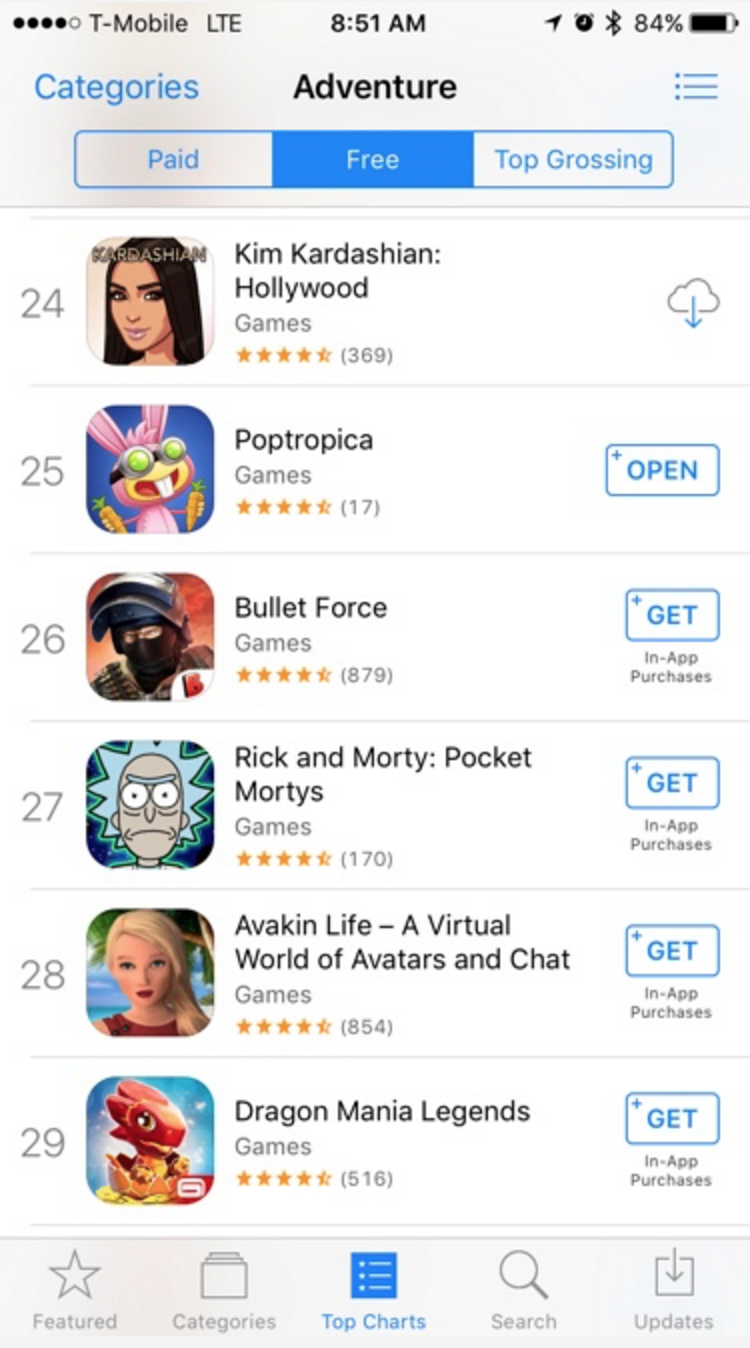
Poptropica was able to keep up with the Kardashians in 2017
Here are a few things I learned designing experiences for a younger audience (or really any age):
Being able to work on a popular IP with a stellar team was an amazing experience. And it has been satisfying to see how this game inspired so many.
“[Poptropica®’s] Mythology Island actually came to define a part of me. I was enthralled by the topic and ended up reading other books that revolved around the same topic…I don’t think anything as simple as a game could ever do that to me, to make me so curious and entranced about the topic.”
-Brave Tomato, https://Poptropica®help.net/2015/12/16/mpip-bt/
Quote from a Poptropica player